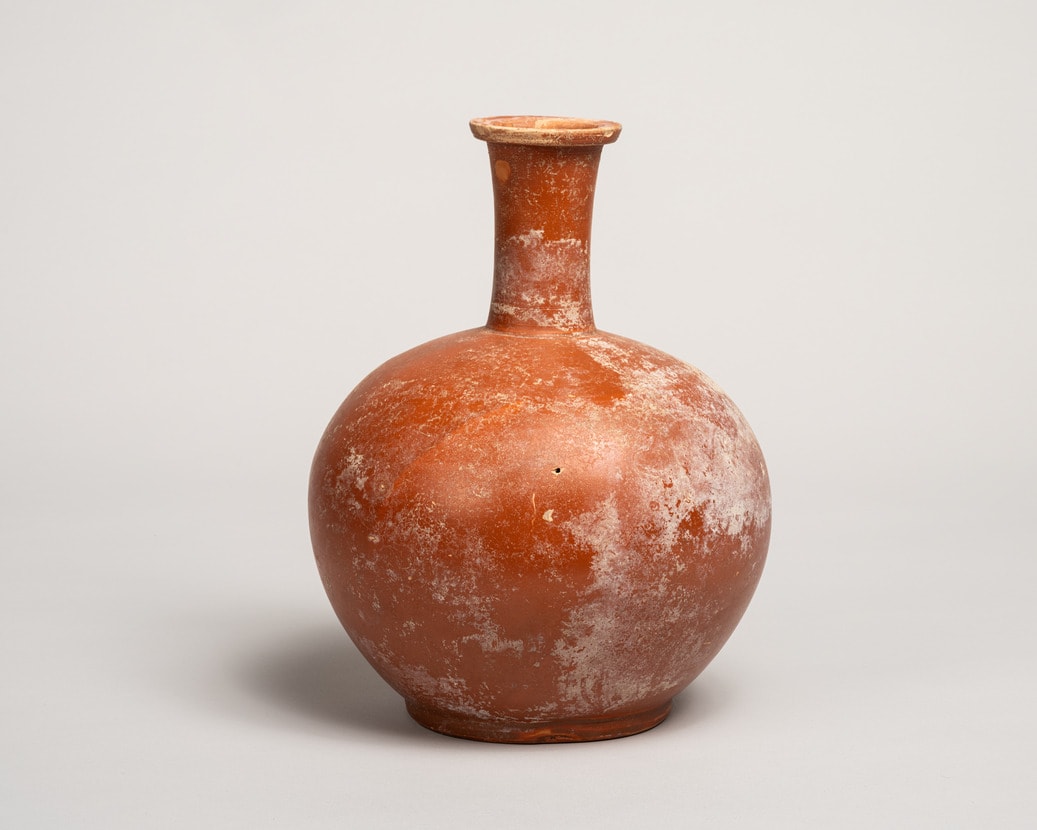
- Object Name:
- Jug
- Title:
- Eastern Sigillata Ware Jug
- Place Made:
- Probably Syria or Lebanon
- Date:
- 1st century BCE–1st century CE
- Medium:
- Clay: wheel-turned, slipped, and fired
- Dimensions:
- 10 1/16 × 7 7/8 in. (25.6 × 20 cm)
- Credit Line:
- Gift of the Betty and Max Ratner Collection
- Accession Number:
- 1983-216
On View
During the Early Roman Period (1st century B.C.E.), a glossy red-slipped pottery called Eastern Sigillata ware began to appear in Israel. It is believed to be a local imitation of the very fine mold-made Samian or Arretine ware produced as luxury items during the Roman Period in Italy and Gaul, some of which also found its way to Israel. The term "sigillata" means "stamped" and generally signifies that the vessel bears a potter's stamp; sometimes the term " sigliata" is used, which means "initialed." Frequently, the local imitations do not bear a stamp.
Information may change as a result of ongoing research.